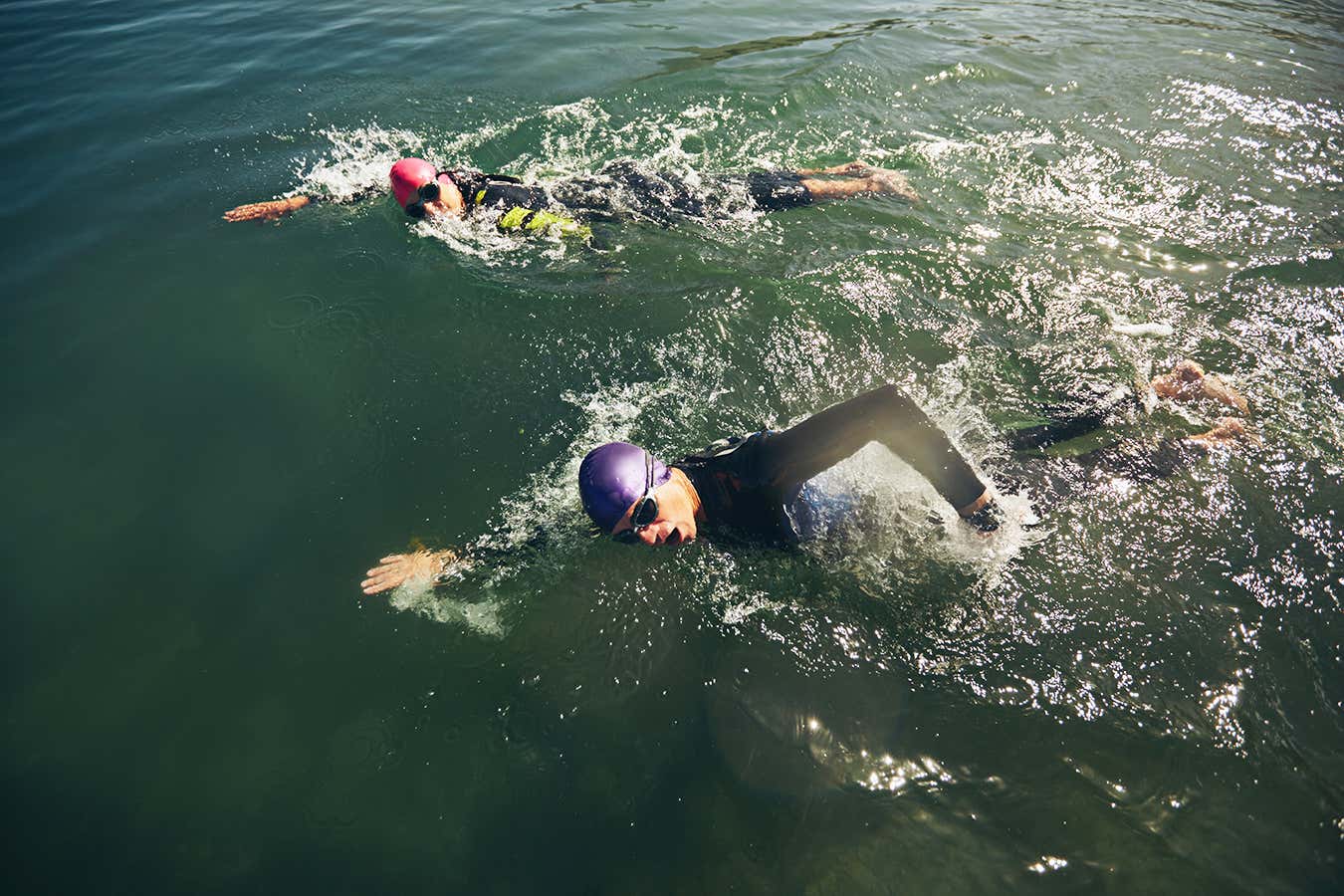Swimming with other swimmers can be more efficient than swimming alone. In open waters, like in marathon swimming events at the Olympic games, swimmers can reduce drag between themselves and the water by positioning themselves relative to other swimmers. This advantage is similar to the phenomenon observed in birds flying in formation or fish swimming in schools. Researchers at École des Ponts ParisTech in France conducted a study to investigate whether swimmers also benefit from swimming in groups. The study aimed to assist French athletes in training for the Paris 2024 Olympic and Paralympic Games.
The researchers set up an 80-meter-long water channel and used two plastic mannequins resembling swimmers with their arms held tight to their bodies. Each mannequin was equipped with a sensor to measure drag forces between the mannequin and water. The researchers tested different configurations, including one mannequin behind the other and the two side by side, while running water through the channel at various speeds. They collected data on the drag forces experienced by the mannequins.
Through measurements and computer simulations, the researchers found that a swimmer can reduce drag on their body by up to 40 percent by swimming behind another swimmer. If a swimmer has to swim side by side with a competitor, swimming at the level of their hip reduces drag by about 30 percent. The researchers explain that in the latter situation, swimmers take advantage of the waves created by their neighboring swimmers, effectively “surfing” them.
Athletes consulted by the researchers confirmed that swimming parallel to another person or passing them at their side is tiring and difficult. This aligns with the study’s findings.
While the experiment used mannequins, which are more passive than human swimmers, the study’s precise findings, such as the best distance to leave when swimming behind another swimmer, could be useful for athletes. However, further research is needed to determine the least tiring route when one swimmer passes another from the side. The researchers also plan to test configurations with more than two swimmers, as seen in actual races.








